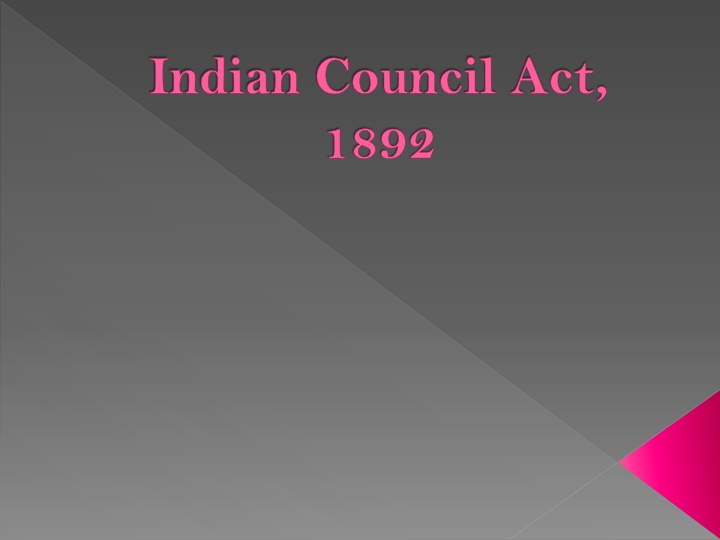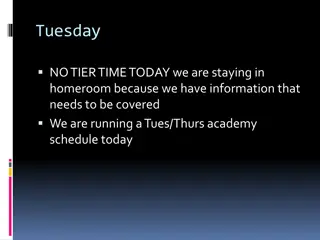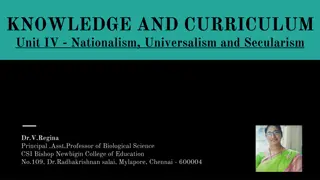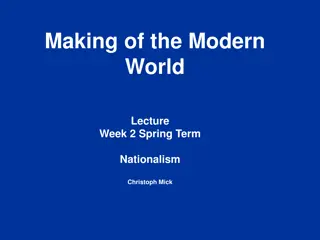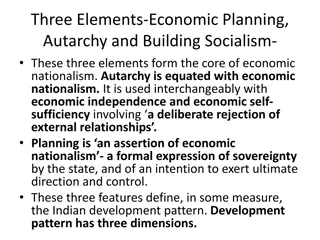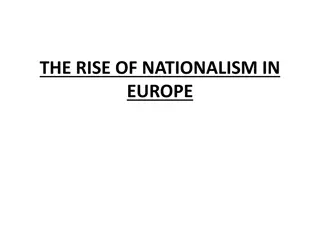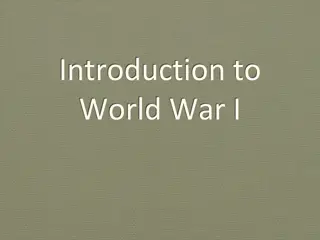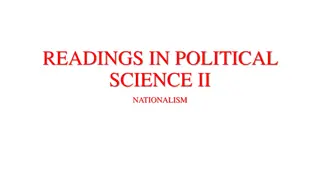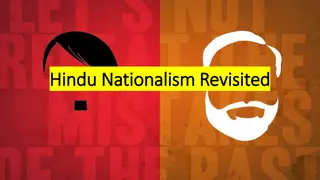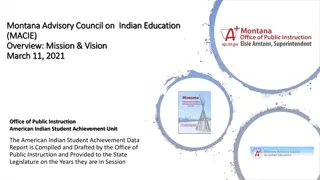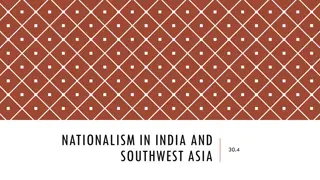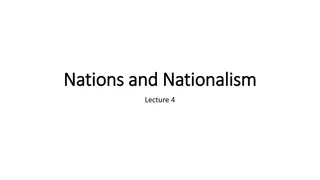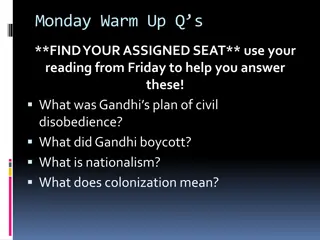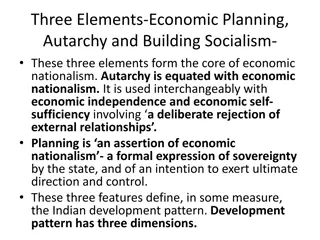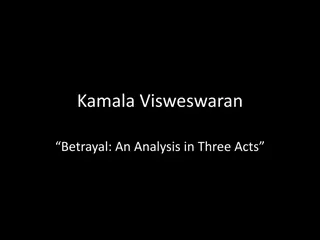Impact of the Indian Council Act of 1892 on Indian Nationalism
The Indian Council Act of 1892 was a significant step towards representative government in colonial India, increasing Indian representation in legislative councils. While it did not fully meet nationalist demands, it indirectly fueled revolutionary movements and calls for a more aggressive anti-British stance. The Act allowed for some Indian involvement in governance but also highlighted the need for further reforms towards true self-governance.
Download Presentation

Please find below an Image/Link to download the presentation.
The content on the website is provided AS IS for your information and personal use only. It may not be sold, licensed, or shared on other websites without obtaining consent from the author.If you encounter any issues during the download, it is possible that the publisher has removed the file from their server.
You are allowed to download the files provided on this website for personal or commercial use, subject to the condition that they are used lawfully. All files are the property of their respective owners.
The content on the website is provided AS IS for your information and personal use only. It may not be sold, licensed, or shared on other websites without obtaining consent from the author.
E N D
Presentation Transcript
Indian Council Act, 1892
Background of the Act The Indian National Congress (INC) was formed in 1885. There was a growing feeling of nationalism and this led the INC to put forth some demands to the British authorities. One of their demands was the reform of the legislative councils. They also wanted the principle of the election instead of nomination. The INC also wanted the right to hold discussions on financial matters which was hitherto not allowed.
The Viceroy at the time Lord Dufferin set up a committee to look into the matter. But the Secretary of State did not agree to the plan of direct elections. He, however, agreed to representation by way of indirect election.
Provisions of the Indian Councils Act 1892 The act increased the number of additional or non-official members in the legislative councils as follows: Central Legislative Council: 10 16 members Bengal: 20 members Madras: 20 members Bombay: 8 members Oudh: 15 members North Western Province: 15
In 1892, out of 24 members, only 5 were Indians. The members were given the right to ask questions on the budget (which was barred in the Indian Councils Act 1861) or matters of public interest but had to give notice of 6 days for it. They could not ask supplementary questions.
The principle of representation was initiated through this act. The district boards, municipalities, chambers of commerce and zamindars were authorized to recommend members to the provincial councils. The legislative councils were empowered to make new laws and repeal old laws with the permission of the Governor-General. universities,
IMPACT It was the first step towards a representative form of government in modern India although there was nothing in it for the common man. The number of Indians was increased and this was a positive step. However, since the British conceded only a little, this act led indirectly many revolutionary movements in India. Many leaders like Bal Gangadhar Tilak blamed Congress s moderate policy persuasions for a lack of positive developments and called for a more aggressive policy against British rule. to the rise of of petitions and
The Indian Councils Act, 1909 The Indian Councils Act 1909 was an act of the British Parliament that reforms in the legislative increased the involvement (limited) in the governance of British India. It was more commonly called the Morley- Minto Reforms after the Secretary of State for India John Morley and the Viceroy of India. introduced councils of a few and Indians
Background of Morley-Minto Reforms Despite Queen Victoria s proclamation that Indian s would be treated equally, very few Indians got such an opportunity as the British authorities were hesitant to accept them as equal partners. Lord Curzon had carried out the partition of Bengal in 1905. This lead to a massive uprising in Bengal as a result. Following this, the British authorities understood the need for some reforms in the governance of Indians.
The Indian National Congress (INC) was also agitating for more governance of Indians. The earlier Congress leaders were moderates, but now extremist leaders were on the rise who believed in more aggressive methods. INC demanded home rule for the first time in 1906. Gopal Krishna Gokhale met Morley in England to emphasise the need for reforms. reforms and self-
Shimla Deputation: A group of elite Muslims led by Aga Khan met Lord Minto in 1906 and placed their demand for a separate electorate for the Muslims. John Morley was a member of the Liberal government, and he wanted to make positive changes in India s governance
Major provisions of the Morley- Minto reforms The legislative councils at the Centre and the provinces increased in size. Central Legislative Council from 16 to 60 members Legislative Councils Bombay and United Provinces 50 members each Legislative Councils of Assam 30 members each of Bengal, Madras, Punjab, Burma and
Four Categories Of Members in Central & Provincial Legislative Council Nominated official members Nominated non-official members Ex-officio members Elected members Categories of members of Central Legislative Council
The Central & Provincial legislative councils have four categories of members as follows: Ex officio members Governor-General and members of the executive council. Nominated official members Government officials who were nominated by the Governor-General. Nominated non-official members Nominated by the Governor-General but were not government officials. Elected members Elected by different categories of Indians
The elected members were elected indirectly. The local bodies elected an electoral college who would elect members of the provincial legislative councils. These members would, in turn, elect the members of the Central legislative council. The elected members were from the local bodies, the chambers of commerce, landlords, universities, traders communities and Muslims. In the provincial councils, non-official members were in the majority. However, since some of the non-official members were nominated, in total, a non-elected majority was there.
Indians were given membership to the Imperial Legislative Council for the first time. It introduced separate Muslims. Some constituencies were earmarked for Muslims and only Muslims could vote their representatives. The members could discuss the budget and move resolutions. They could also discuss matters of public interest. They could also ask supplementary questions. electorates for the
No discussions on foreign policy or on relations with the princely states were permitted. Lord Minto appointed (on much persuasion by Morley) Satyendra P Sinha as the first Indian member of the Viceroy s Executive Council. Two Indians were nominated to the Council of the Secretary of State for Indian affairs.
The Act introduced communal representation in Indian politics. This was intended to stem the growing tide of nationalism in the country by dividing the people into communal lines. The culmination of this step was seen in the partition of the country along religious lines. The effects of differential treatment of different religious groups can be seen to this day. The Act did nothing to grant colonial self-government, which was Congress s demand. The Act did increase Indian participation in the legislative councils, especially at the provincial levels.
